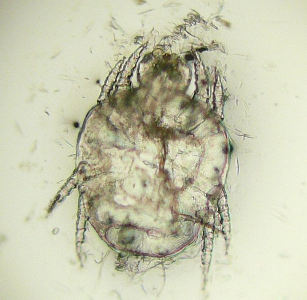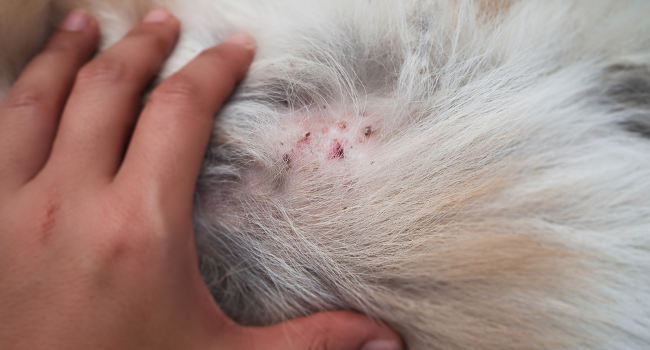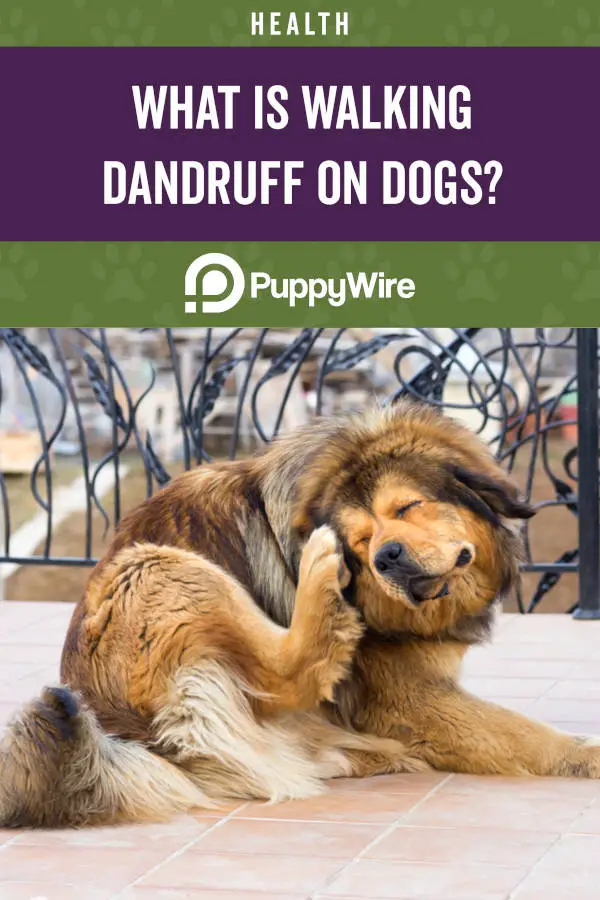Walking Dandruff on Dogs: Symptoms, Causes, Treatment and Prevention

Cheyletiella mites are the cause of walking dandruff on dogs, and they can cause a host of unpleasant symptoms like dandruff, irritation, and itching. This mite species has a very large mouth to latch onto your dog, and you can find them on cats, rabbits, dogs, and even humans.
We’re going to discuss what walking dandruff is, symptoms, causes, how to treat it, and prevention tips. This way, you’ll know exactly what to look for if you suspect your dog has walking dandruff and how to go about treating it to make your dog more comfortable.
What is Walking Dandruff on Dogs?
Medically, walking dandruff goes by the name Cheyletiellosis after the large mites that cause it. It’s a less serious type of mange, but this can also make it harder to diagnose and treat because many veterinarians don’t look for it.
This is a very contagious infestation that passes from infected dogs or animals to infected animals, and it’s very common in dogs that share a household with rabbits or cats since these are the preferred hosts. It’s common in overcrowded facilities because the dogs are in close contact with one another.
If your dog has walking dandruff, their skin will peel, flake, and turn itchy and swollen. The flakes will move as the mites crawl underneath your dog’s skin, and this is where the term walking dandruff comes from.
The mites live for up to 10 days, but they can’t continue their life cycle on a human host, so they don’t stick around on a human for long. If a person gets this disease, they’ll develop itchy, round, red bumps with a rash on your buttocks, arms, and trunk. It’ll go away when you get rid of the mites.
Types of Mites

There are four mite types that tend to infest dogs and other animals like cats and rabbits, and this includes the Cheyletiella yasguri. This is a surface mite.
- Cheyletiella yasguri – These mites zero in on your dog’s back, and they can cause scabbing, flaking, and itching that gets more severe as the infestation gets worse.
- Demodex canis – This is the most common mite to infest dogs, and it lives in their hair follicles. This mite is usually harmless, but they will breed out of control if your dog’s immune system is repressed.
- Otodectes cynotis – Better known as ear mites, you see this species in cats more than dogs. If your dog has an ear mite infestation, it usually stays in their inner ears.
- Sarcoptes scabiei – This mite crawls along your dog’s skin on the surface, but it will burrow into the skin to lay their eggs. In turn, your dog will develop an extremely itchy rash all over their body.
Symptoms of Walking Dandruff

Fortunately, walking dandruff comes with several different symptoms that you can tell your vet about to try and narrow down which type of mange they have. Your dog may not experience all of these symptoms, or they can experience them in stages.
- Dandruff or scales – particularly along the back and neck
- Itchiness
- Hair loss
- Skin redness
- Bumps
- Scabs
- Face scratching
Diagnosing Walking Dandruff
One of the first things you should do is schedule an appointment with your vet if you notice your dog has a rash or seems uncomfortable. Your vet will be able to narrow down the type of mange your dog has and suggest the proper treatment.
You can see the mites moving once in a while, but they can be difficult to find. Many vets will use a flea comb or sticky tape to look for signs of any eggs or mites, or your vet may recommend taking a skin scraping.
If your dog self-grooms, your vet may require a fecal sample to look for signs of mite eggs. However, none of these methods are 100% foolproof, and you may not find the mites even when they’re present because they’re so tiny.
Your vet will base their diagnosis heavily around the signs and symptoms you tell them about, and they’ll most likely recommend a treatment without concrete evidence that your dog has walking dandruff. They’ll usually start your dog on a trial treatment and see if it clears up the infestation before they move to other skin problem causes.
Treatment for Walking Dandruff
You have several options available for treating walking dandruff. Still, you’ll have to treat the other pets in the house as well as the environment like your floors, bedding, toys, and upholstery at the same time. This will kill the mites and prevent them from reproducing and continuing to infect your dog.
- Ivermectin – This is an anti-mite medication that is available in inject or oral form, but it does come with some negative side effects for certain breeds of dogs. If your dog is sensitive to medications, you want to watch them carefully right after they get their first treatment to see how they tolerate it.
- Milbemycin – Although this is a parasitic preventative medication, it’s useful for killing Cheyletiella mites. You give this to your dog orally, and it’ll help stop the mite life cycle.
- Selamectin – This is another parasite preventative that works well for treating walking dandruff. You apply this directly to your dog’s skin, so it can be difficult for long-haired breeds.
- Topical – There are shampoos, sprays, and dips available that are effective at killing off the mites and preventing them from reproducing. These are very time-consuming treatments, and you shouldn’t use them without your vet’s express instructions.
Before you start any treatment, you have to let your vet know if your dog has any herding breeds in its makeup because Ivermectin is toxic. Dogs like Collies, Australian Shepherds, German Shepherds, Shetland Sheepdogs, and the Old English Sheepdog are more prone to developing Ivermectin toxicity.
Treatment also isn’t instantaneous, and it can take anywhere from two weeks to a month to get rid of walking dandruff. This could require multiple vet visits and different treatments before you get rid of the mites, and your dog starts to heal.
Preventing Walking Dandruff
Like most things, preventing walking dandruff is much easier than treating it. There are several easy things you can do to reduce the chances of your dog coming into contact with this parasite.
Clean the Environment
It’s essential that you clean the environment before, during, and after you start to treat your dog for this parasite to make sure you get rid of them all. You should clean any bedding that came into contact with your dog, scrub carpeting, and vacuum to get rid of any stray mites. You’ll have to repeat this process once or twice a week through the treatment process.
Reduce Your Dog’s Contact
If you have infested animals in the house like rabbits or cats, you’ll want to reduce your dog’s contact with them. Quarantine any infected animals while you treat them, and make sure to reduce your dog’s contact with any of the infested animal bedding or toys until you can clean them.
Check Often
Even if you’ve taken every precaution available, you still want to check your dog often for signs they have walking dandruff so you can start to treat it as soon as possible. If you see something, schedule an appointment with your vet and take note of your dog’s symptoms.
Bottom Line
Walking dandruff can be a challenge to treat, but there are several options available. Once you get rid of the mites, your dog will slowly start to heal and live a happier and healthier life.
